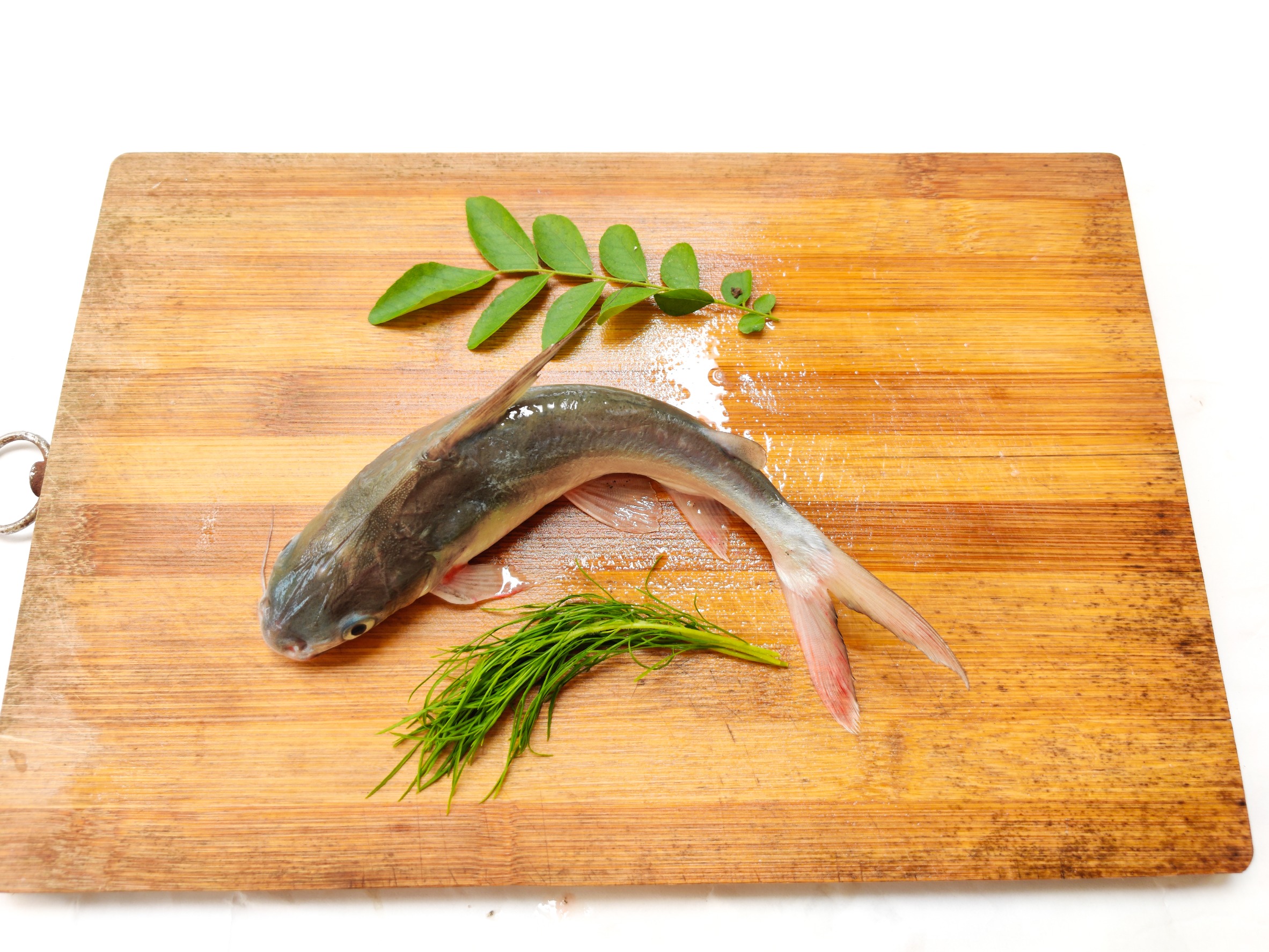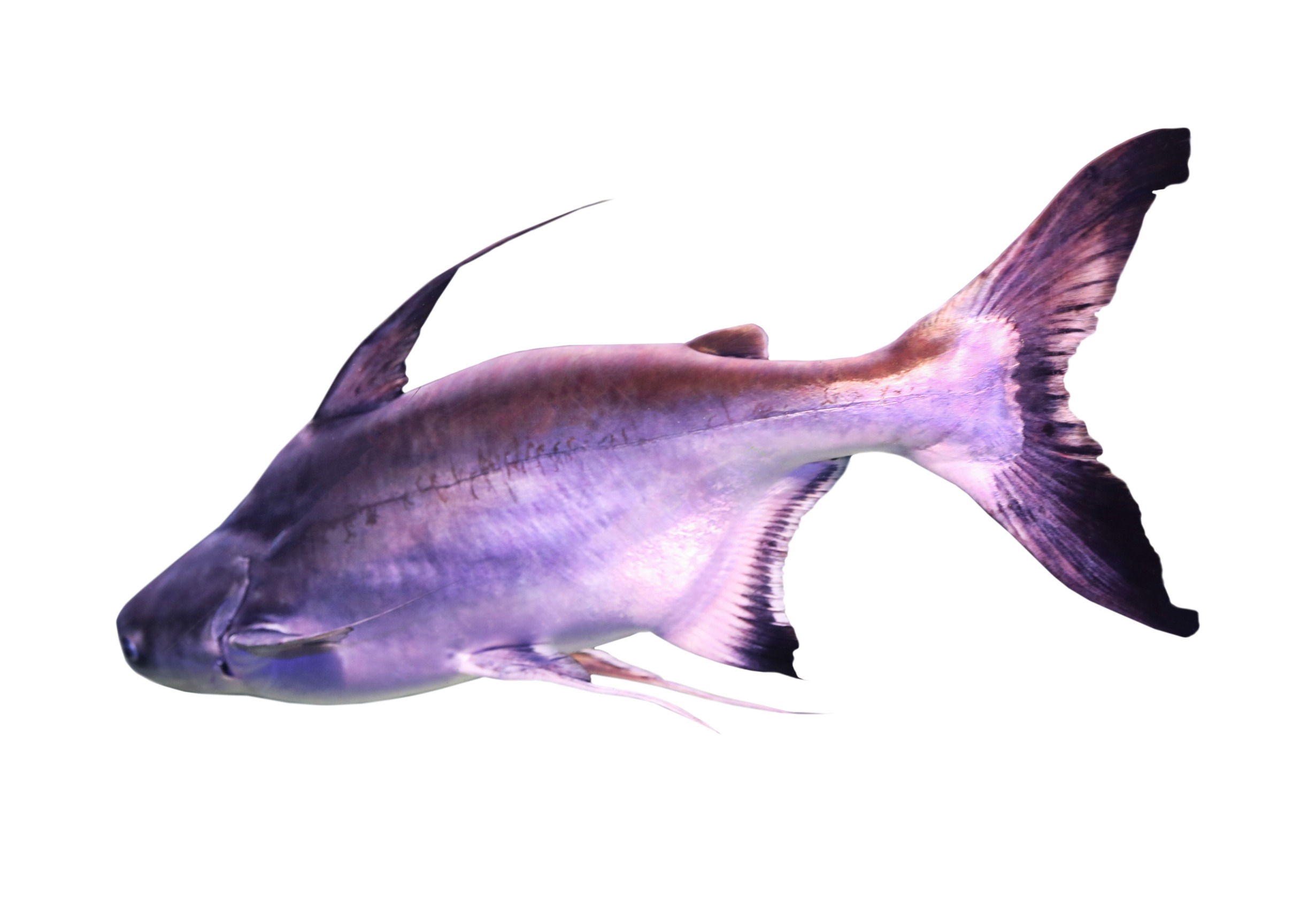People can eat saltwater catfish, but they have a reputation for having a strong taste and a lot of small bones. They could be more popular when it comes to food. However, they can be cooked in various ways to make an item for a delicious meal.
One thing to keep in mind when preparing saltwater catfish is that they have a lot of bones. When eating saltwater catfish, you must be careful when cleaning and cooking them. Removing all the bones before consuming the fish is essential as it can be dangerous if swallowed accidentally. The best way to cook saltwater catfish is by frying or grilling them with simple seasonings like lemon pepper or Cajun spices.

Saltwater Catfish Introduction
Saltwater catfish, also known as hardhead catfish or gaff-topsail catfish, is a species of fish found in the coastal waters of the western Atlantic Ocean. Its scientific name is Ariopsis felis, and it belongs to the family Ariidae. They are known as hardhead catfish because of the rugged, bony plate on their heads, which provides protection from predators and is used for defense.
These catfish are opportunistic predators, feeding on a wide variety of prey, including small fish, crustaceans, and other invertebrates. They typically grow up to 2 feet long and weigh 10 pounds.
How to Distinguish Saltwater Catfish from Appearance?
Saltwater catfish have a distinctive appearance that differentiates them from other catfish species. They are generally small to medium-sized, with most species ranging from 6 to 18 inches long. They have long, slender brown or gray bodies with a whitish underside. Their skin is covered in tiny scales that feel rough to the touch.
One of the most distinctive features of saltwater catfish is their spiny fins. They have sharp, pointed spines on their dorsal, pectoral, and anal fins, which they use for protection against predators. These spines can also deliver a painful sting to humans who handle the fish without proper precautions.
Look for key features to distinguish saltwater catfish from other catfish species. First, look for the spiny fins mentioned above. Other catfish species may have some spines on their fins but are less sharp or less numerous than those found on saltwater catfish.
Another feature to look for is the shape of the fish’s head. Saltwater catfishes have flattened heads with a wide mouth, while other catfish species may have a more rounded or pointed head shape. If you check for all these characteristics, you can quickly determine if the fish you’ve caught is a saltwater catfish.
Where Can you Catch Saltwater Catfish?
You can find Saltwater catfish in coastal and estuarine waters worldwide, so their specific locations will vary depending on the region. However, there are a few areas where saltwater catfish are known to be particularly abundant.
Saltwater catfish are along the Atlantic and Gulf coasts in the United States, with popular fishing spots including the Chesapeake Bay in Maryland, the Pamlico Sound in North Carolina, and the Mississippi Sound in Mississippi. In Australia, saltwater catfish are off the northern coast, with popular fishing locations including Darwin Harbour in the Northern Territory and the Gulf of Carpentaria in Queensland.
You can also fish for them in Southeast Asia in the brackish waters of estuaries and mangrove forests. Some popular fishing locations for saltwater catfish in this region include the Mekong Delta in Vietnam, the Siak River in Indonesia, and the Johor River in Malaysia.
When is the Best Time to Catch Saltwater Catfish?
Saltwater catfish are generally more active and easier to catch during the warmer months, from late spring through early fall. They are often most active during low light conditions, such as dawn and dusk, as they are nocturnal feeders.
They are likelier to venture out from cover when the light is dim. However, they can still be caught during daylight hours, especially if the water is murky or has an overhead cover. Saltwater catfish are in areas with slow-moving water, such as tidal creeks, estuaries, and marshes.
They tend to be more active when the tide moves, so fishing during incoming or outgoing tides can be productive. Local conditions can also play a role, so researching the specific waters you plan to fish in is always an excellent idea.
Can you Fish for Saltwater catfish?
Some catfish species are endangered, and hence many restrictions have been imposed on fishing for them, and it’s discouraged. However, saltwater catfish populations are stable, and no significant conservation concerns exist. It is allowed to fish for saltwater catfish, and you won’t have to meet that many restrictions either.
They are not endangered or threatened species. They are widely distributed throughout the coastal waters of the western Atlantic Ocean, from New Jersey to southern Brazil. They are a hardy and adaptable species, often caught as bycatch while targeting other fish species.
Although they are not typically considered game fish, they are still valuable to the marine ecosystem as they help to control populations of smaller prey species. However, even saltwater catfish can be negatively impacted by overfishing, habitat destruction, pollution, and other environmental factors. It is important to practice responsible fishing and only take what you need while releasing undersized or unwanted fish.

Saltwater Catfish Catch Limits
The catch limits for saltwater catfish can vary depending on the species, location, and local fishing regulations. In some areas, limits are in place to help manage fish populations and ensure sustainable fishing practices.
For example, in the United States, the federal government sets catch limits for some species of saltwater catfish in federal waters. For instance, the catch limit for Gulf of Mexico Gafftopsail catfish is 50 fish per day per angler, with a minimum size limit of 14 inches.
However, in most places, no bag limits are imposed on the fishing of saltwater catfish because these fish are not considered game fish and are often caught as bycatch while fishing for other fish. However, consult your local authorities about the catch limit before fishing.
What does Saltwater Catfish Taste like?
Saltwater catfish have a mild, sweet flavor with firm, white flesh like many other catfish. However, the taste of saltwater catfish can vary depending on several factors, including the size and age of the fish, the water quality in which it was caught, and how it was prepared.
Generally, smaller saltwater catfish are better eaten than larger ones, as they tend to have a more delicate flavor and a more tender texture. The flavor of saltwater catfish is similar to freshwater catfish but with a slightly saltier taste due to the salt content in their environment.
One thing to note is that Saltwater catfish can taste slightly muddy or earthy if not prepared properly, as most other catfish do because they are bottom feeders that tend to inhabit muddy or brackish waters, which can impart a muddy flavor to their flesh. However, if the saltwater catfish is cleaned and prepared correctly, it should not have a strong or unpleasant taste.
The texture of saltwater catfish can also vary depending on the size and age of the fish. Smaller saltwater catfish have a more tender texture, while larger fish can be more challenging and chewier. The meat of saltwater catfish is also relatively lean, making it dry out quickly if overcooked.
What is the Best Way to Cook Saltwater Catfish?
Saltwater catfish is a versatile fish that can be cooked in various ways, and the best way to cook it will depend on personal taste and cooking preferences. We recommend pan-frying it.
Before you start cooking saltwater catfish, you should get rid of the muddy taste that it will have if that’s not your preference. To avoid a muddy flavor when cooking saltwater catfish, clean the fish thoroughly and remove any excess fat or dark meat. Some people also prefer to soak the fish in milk or a mixture of water and vinegar for a short time before cooking to help remove any remaining muddy flavor.
Here are some popular methods to cook saltwater catfish and have a delicious meal:
Pan-Fry
Panfrying is the traditional way to cook saltwater catfish, producing a crispy, golden brown crust, and tender, juicy flesh. To prepare, dredge the saltwater catfish filets in seasoned cornmeal or flour, then pan-fry in hot oil until golden brown and crispy. Serve with lemon wedges and tartar sauce for a classic seafood meal.
Grilled
Grilling is a healthy and flavorful way to cook saltwater catfish. Brush saltwater catfish filets with olive oil and herbs, then grill over high heat for a few minutes on each side until cooked through. Serve with grilled vegetables and a fresh salad for a complete meal.
Baked
Baking saltwater catfish filets is a simple and easy way to prepare fish. Place saltwater catfish filets in a baking dish, drizzle with olive oil, season with salt and pepper, and bake in a preheated oven at 375°F for 15-20 minutes until the fish is cooked through and flaky. This method is also great for cooking fish in bulk for meal prep.
Broiled
Broiling is a quick and easy way to cook saltwater catfish, resulting in a crispy, browned crust, and tender, flaky flesh. Brush saltwater catfish filets with melted butter, lemon juice, and garlic, then broil for a few minutes until the fish is browned and cooked through. This method is perfect for busy weeknights when you need a quick and easy meal.
Blackened
Blackening is a cooking technique that involves searing fish in a hot skillet with a spicy seasoning blend. To blacken saltwater catfish, rub the filets with a mixture of Cajun seasoning and olive oil, then sear in a hot skillet until blackened on the outside and cooked through. This method is perfect for those who love spicy food and want to add heat to their meal.
No matter which method you choose, it’s crucial to overcook the fish, as this can make it dry and tough. The best way to tell if the fish is done is to insert a fork into the thickest part of the fillet and gently twist. The fish is cooked if the flesh flakes easily and is opaque all the way through.
Is Saltwater Catfish the Best Tasting Catfish?
Taste is highly subjective, but the taste of saltwater catfish is less popular among fish lovers because of its strong flavor and oiliness, which some people find unpleasant. However, some people can overlook that and enjoy these catfish’s firm, white flesh and find their flavor delicious. If cooked properly, anything can taste good.
For example, the channel catfish and blue catfish are popular among anglers and often considered good eating. The channel catfish has a mild, sweet flavor and a tender, flaky texture. On the other hand, the blue catfish has a firmer texture and a more assertive flavor, with a slightly sweet taste and a hint of gaminess.
In conclusion, you can certainly eat saltwater catfish. You can try them out if you’re seeking some unique flavors. Just cook them well, and there’s a good chance you will be satisfied.











